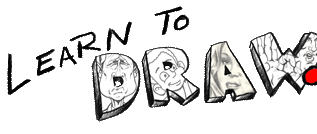|
Another technique in shading is smudging or smearing
the graphite on the paper. You first create your basic
shading as talked about on the previous page, then you
take your finger and smudge or smear the graphite of the
shading. The smudging of the shading will blur the
shading, make it less crisp. The graphite will also get
all over your fingertip. Smudging the graphite also will
blend the shadow values closer together - the difference
between the highlight to the midtone to the shadow will
be less obvious, there is less contrast. Click on the
image to the right to see what I mean. Blending
Stump
If you don't want to get your fingers dirty, you could always get a blending
stump. A blending stump is essentially paper wrapped extremely tight around
itself into a pencil-like stick that is pointed at both ends. Blending stumps
come is many sizes; the smaller the stump, the finer you can get with your
smudging. When you
buy a stump
it's clean, but a clean stump isn't going blend as well as a dirty stump, so you
have to dirty it up. Here's how: On a sheet of paper take a pencil and tightly
lay down a lot of graphite in a small area. take the tip of the blending stump
and rub it around in the graphite, turning the stump as you rub so you can load
up the whole tip with graphite. Now use the stump just as you would your finger
to smudge the shading you've drawn. The more you use the blending stump, the
more graphite gets rubbed into it, and the better it gets!
 |
|
click to enlarge |
Smudging the
graphite means that you have to work less hard at shading. You can put some
graphite down then smear it and cover a larger area with the blurred shadow than
if you didn't smear the graphite. Since you want to smear the graphite, you'll
want to use a softer lead pencil, like a 5B pencil for example. Softer
lead, like 5B smears more readily than a harder lead pencil, like HB
(a #2 pencil) or a 4H. If you want to try the smudging technique, I'd
suggest using a 5B pencil. For more information on pencils click
this page.
 |
|
Click to enlarge |
The smearing (or smudging) shading effect creates softer, more blurry shadows
than shading with basic shading. The softer shadows you can get with smearing
works well when you're drawing smooth human skin, like a woman's or a baby's
skin. Have you ever noticed in Glamour photography the photo is slightly
blurred? That is done so that the imperfections on the skin are less noticeable.
The same effect can be done if you smudge the shadows on your drawing of a
person, or softer objects like clouds or clothing. I drew the Virgin Mary cover
image of a book where I used the smearing technique quite extensively. I'm not
a big fan of the smudging technique because most of the time I don't want the
blurring that it creates. You don't have to stick to one way of shading in your
drawing, you can use several shading techniques if you'd like, including the
smudging technique. However, I try and avoid using it as the main shading
technique. |
